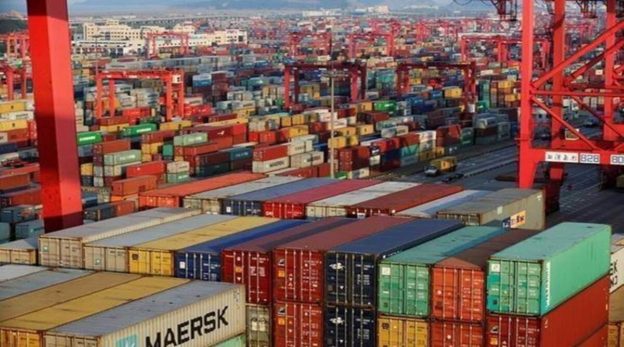The Russia-Ukraine war and the stringent sanctions on Russia by the West have thrown up more opportunities for India’s businesses than earlier anticipated.
Defence production and maintenance, shipbuilding and oil refining are three areas where Indian firms are already beneficiaries or have at least received enquiries from potential importers.
India’s petroleum products exports, which surged 161% in FY22 to $67.5 billion, partly driven by a rise in prices, will get a further fillip in the current year with several European countries resorting to India to source refined products from Russia’s Urals crude, which is out of bounds for them.
Currently, discounted Russian crude allows private Indian refiners Reliance and Nayara to realise over $15-$18 per barrel from the export of refined products to Europe and the US. This compares with $7-$9 per barrel in March-April when the majority of discounts were taken by traders.
Given the possibility of a prolonged stand-off between Moscow and the West and the chances of a steady supply of Russian crude to India at relatively lower rates, India’s private oil refiners may go for capacity expansion in the short term to raise supplies to Europe. Eventually, the changed structure of crude sourcing could even let India realise its goal of becoming a refinery hub.
Anish De, partner at KPMG India, said: “There is strong potential for India to emerge as a refinery and petrochemical hub for Europe as they look for an alternative to China. India has an advantage in terms of scale, location, skillsets and technology to play the part that China had played for Europe in the past.” De believes that the change will happen in the coming decade even with the transition to electric vehicles.
However, analysts say the gains from oil exports to Europe may largely be limited to private refiners as state-run oil marketing companies have the obligation to cater to domestic demand first.
Among the top importers of oil products products from India last fiscal, only Netherlands figured from Europe, while the bulk of the shipments were to Singapore, the US, Australia, South Korea and Indonesia.
According to sources, hit by supply disruptions, Russia’s defence companies have approached Indian firms seeking to buy various components for naval shipbuilding and defence equipment. These firms are also looking to recruit Indians as the exit of skilled shipbuilding professionals, post the breakout of war, has created a manpower shortage.
Some European companies, which purchased defence and shipbuilding articles from Russia, now want India to assemble these products and supply them.
Further, firms from Africa and South East Asia, which have conventionally been reliant on Russian defence platforms, now want India to provide the maintenance repair and operations (MRO) services for such equipment. “We have been approached by original equipment manufacturers from Russia and Europe for joint venture participation. The firms have agreed to give the technology support needed for creating manufacturing and assembling facilities in India,” an industry source said.
Russia-made naval ships may be repaired in India, with that country’s consent to share technology.
According to people in the know, Russian collaborators are more than eager to join hands with India for the Atmanirbhar Bharat plan. They are also keen to participate in the civil mercantile marine area to build platforms and ships for the Inland Waterways Authority projects — National Waterways-I from Varanasi to Paradip and other infrastructure building activities, the sources added.
In the decade between 2011 and 2021, India imported $22.8 billion worth of arms from Russia, its largest supplier. The purchases during the period were up 42.5% over the previous decade.
Of course, as far as supplies to Europe are concerned, India refiners will have to face stiff competition from those in West Asia. “The options available to Indian firms would be to sell on the high seas as long as the discounts on Russian crude continues. India will also have to increase it refining capacity going ahead as the current capacity is good enough only up to 2030,” a consultant said.
The government had a decade ago announced a plan to make India a regional refinery hub. Since then refining capacities have been enhanced both on the eastern and western coasts, but the rise in exportable surplus has been moderate due to a steep rise in domestic consumption.
Indian crude oil refiners — IOCL, HPCL, BPCL, RIL and Nayara — are currently sourcing more than 0.8 million barrels per day of Russian Ural crude that is discounted at a huge $35 per barrel.
India’s refinery throughput is roughly 89% of the installed capacity of 249.88 million metric tonne per annum (mtpa). This leaves significant capacity to serve new export markets, mostly in the private sector.
Analysts say India will have around 1.5 to 2 times its current refinery capacity in the next 20-25 years.
India’s consumption of petroleum products stood at 202.7 mtpa in FY22, up from 194.3 mtpa in FY21, but lower than the pre-pandemic level of 214.1 mtpa (FY20). The country exported 61.8 mtpa of petroleum products worth $42.3 billion in FY22, while imports touched 40.2 mtpa ($24.2 billion).
https://www.financialexpress.com/economy/russia-europe-eye-india-trade-route/2550785/





